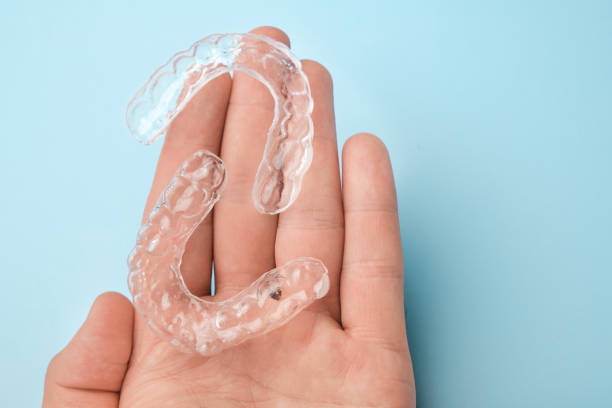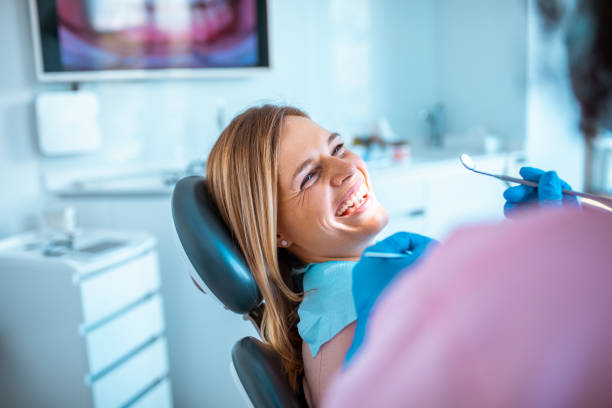As a dental student, mastering the use of dental X-ray sensors and Cone Beam Computed Tomography (CBCT) is crucial for accurate diagnostics and treatment planning. Dental Laboratorio offers high-resolution digital dental X-ray sensors suitable for daily routine usage, ensuring precise and reliable imaging. This guide will help you understand the proper techniques and common mistakes to avoid when using these essential tools.
Proper Use of Dental X-Ray Sensors
Sensor Placement
- Parallel Positioning: Ensure the sensor is placed parallel to the teeth. Incorrect angles can distort the image, making teeth appear shorter or longer than they actually are. This distortion can lead to inaccurate assessments of dental conditions and surrounding structures.
- Full Coverage: Position the sensor to cover the entire area of interest. Insufficient coverage may result in missing important details, such as tooth roots or surrounding bone, potentially leading to misdiagnosis.
- Stability During Exposure: Both the patient and the operator should remain still during X-ray exposure to prevent blurred images. Movement can obscure small details, such as early-stage dental caries or subtle bone structure changes.
Exposure Settings
- Avoid Over-Exposure: Setting the kilovoltage (kVp), milliamperage (mA), or exposure time too high increases the patient’s radiation exposure unnecessarily and can result in over-exposed images. Over-exposure leads to a loss of detail and a washed-out appearance.
- Avoid Under-Exposure: Conversely, setting the exposure parameters too low results in under-exposed images that appear too dark. This makes it difficult to visualize the teeth and surrounding tissues clearly, potentially obscuring important details and leading to inaccurate diagnoses.
Patient Communication and Preparation
- Clear Explanation: Always explain the X-ray procedure to the patient. Informed patients are more likely to cooperate, reducing the risk of incorrect positioning or movement.
- Adequate Protection: Provide proper protection for the patient, such as a lead apron with a thyroid collar, to minimize radiation exposure and reduce the risk of harmful effects.
Sensor Handling and Maintenance
- Gentle Handling: Handle the sensor with care to avoid damage. Dropping the sensor or using excessive force can affect its performance and image quality, leading to issues like dead pixels or imaging errors.
- Proper Cleaning and Sterilization: Follow the correct cleaning and sterilization procedures to prevent the buildup of contaminants on the sensor. Incorrect cleaning agents or sterilization methods can damage the sensor and pose a risk of cross-infection between patients.
- Regular Calibration: Calibrate the sensor regularly to maintain its sensitivity and accuracy. Without proper calibration, X-ray images may become unreliable, leading to incorrect diagnoses and inappropriate treatment decisions.
Proper Use of CBCT
Patient Positioning
- Correct Alignment: Ensure the patient is correctly positioned in the CBCT machine. Incorrect alignment can result in distorted images, making it difficult to accurately assess the dental and maxillofacial structures.
- Stability: The patient should remain still during the scan to prevent motion artifacts, which can blur the image and obscure important details.
Scan Settings
- Appropriate Field of View (FOV): Select the appropriate FOV based on the diagnostic needs. A smaller FOV reduces radiation exposure and improves image resolution, while a larger FOV may be necessary for more extensive examinations.
- Optimal Exposure Parameters: Set the exposure parameters (kVp, mA, and exposure time) according to the manufacturer’s guidelines and the patient’s size. This ensures adequate image quality while minimizing radiation exposure.
Patient Communication and Preparation
- Clear Instructions: Explain the CBCT procedure to the patient and provide clear instructions on what to expect. Informed patients are more likely to remain still and cooperate, resulting in better image quality.
- Adequate Protection: Provide proper protection for the patient, such as a lead apron, to minimize radiation exposure.
Machine Maintenance
- Regular Calibration: Calibrate the CBCT machine regularly to ensure its accuracy and reliability. Without proper calibration, the images may become unreliable, leading to incorrect diagnoses and inappropriate treatment decisions.
- Routine Maintenance: Follow the manufacturer’s guidelines for routine maintenance to keep the machine in optimal working condition. This includes cleaning the machine, checking for any signs of wear or damage, and addressing any issues promptly.
Conclusion
Mastering the use of dental X-ray sensors and CBCT is essential for accurate diagnostics and treatment planning. By following the proper techniques and avoiding common mistakes, you can ensure high-quality images and minimize radiation exposure for your patients. Dental Laboratorio‘s high-resolution digital dental X-ray sensors are an excellent choice for daily routine usage, providing reliable and precise imaging for dental students and professionals alike.



